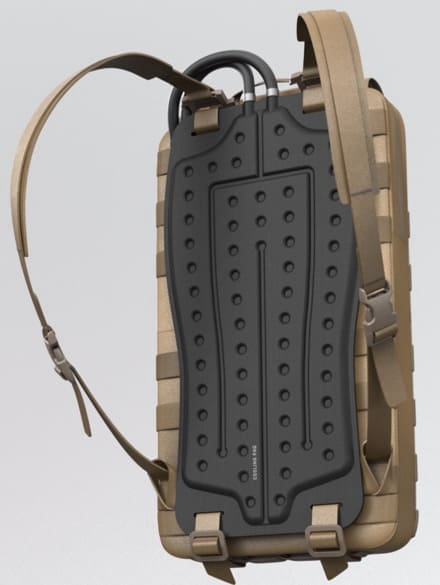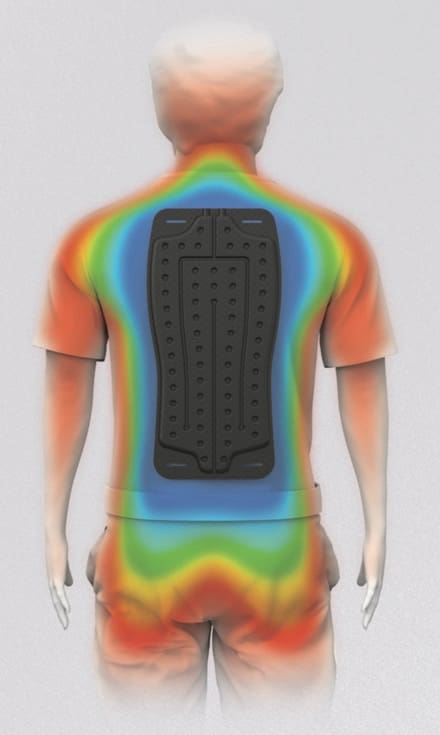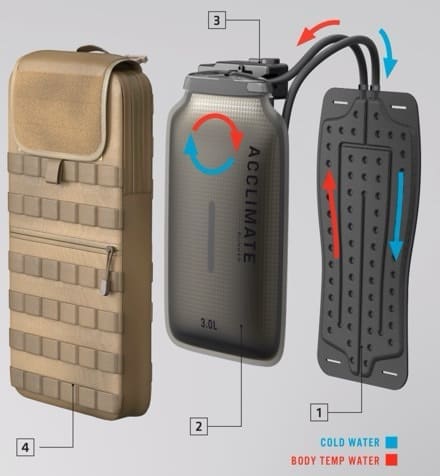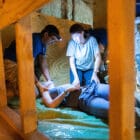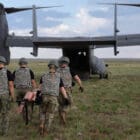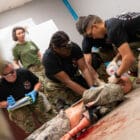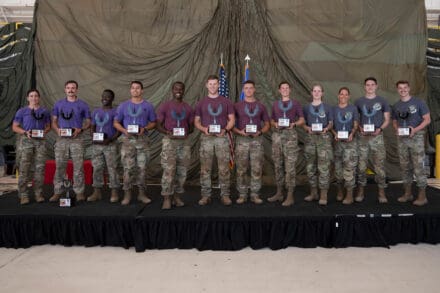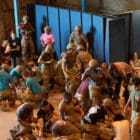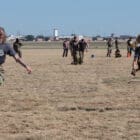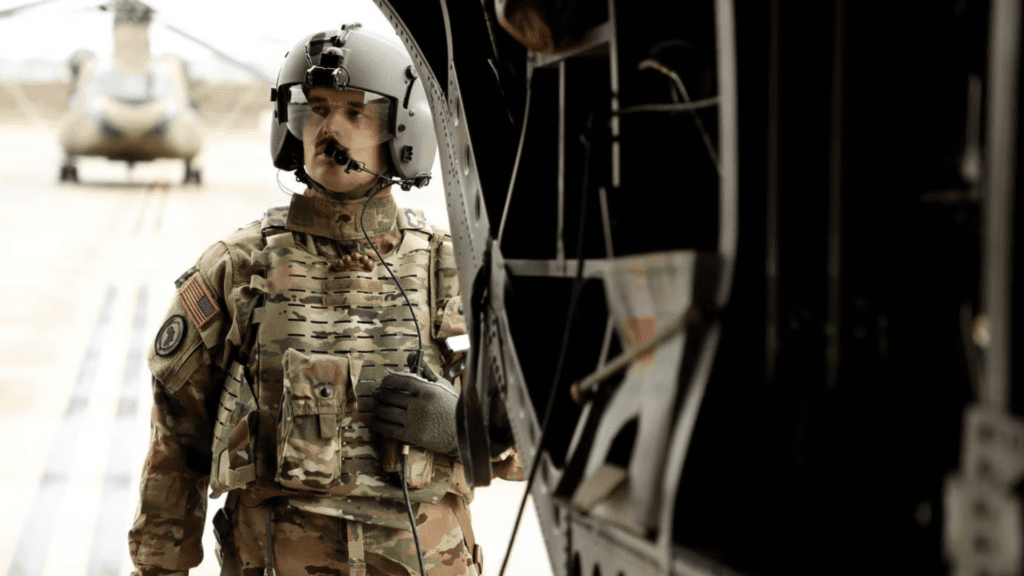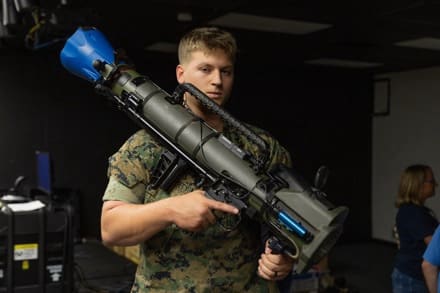
Marine Corps Base Quantico, Va. —
When Lt. Gen. Lewis “Chesty” Puller famously quipped, “Hit hard, hit fast, hit often,” there’s a good chance he had Marine Corps mortarmen in mind.
From the Spanish-American War through the 21st-century War on Terror, the Marine Corps has consistently employed artillery and other fire support systems to achieve decisive results. Today, as the Corps continues to modernize with Force Design as its strategic blueprint, its focus remains squarely on agility, precision, and rapid response—with capabilities like mortars and the Multi-Role Anti-Armor Anti-Personnel Weapon System– serving as proven force multipliers ahead of the future fight.
At Marine Corps Systems Command, the Program Manager for Training Systems (PM TRASYS) is fielding cutting-edge capabilities that allow Marines to train seamlessly on these fire support systems, prioritizing safety while ensuring the highest levels of readiness through training that closely mirrors real-world conditions.
In recent years, there has been growing concern that Marines and other servicemembers regularly exposed to heavy blasts—or blast overpressure (BOP) —have suffered a higher rate of adverse effects on brain health and cognitive performance.
In an August 8 memorandum, the Pentagon announced plans to strengthen the monitoring of cognitive health among service members through regular assessments and issued policy guidance to establish procedures and standards for training and operations.
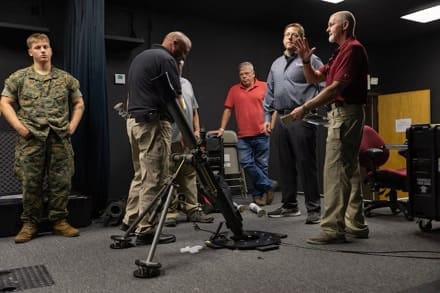
As stated by Deputy Defense Secretary Kathleen Hicks, “This policy is not meant to preclude or unreasonably restrict commanders from conducting mission-essential weapons training. Rather, this policy establishes requirements for practical risk management actions to mitigate and track BOP exposures across the DoD.”
Understanding the risks associated with repeated blast exposure, PM TRASYS has fielded the Indoor Simulated Marksmanship Trainer, which allows Marines across the installation to maintain their proficiency with various weapons systems without the need for live ammunition. This cutting-edge system is an advanced interactive audio/visual simulator that offers both basic and advanced marksmanship training, weapons employment drills, and tactical decision-making exercises for a range of weapons, including the M252 81 mm mortar and the iconic M3A1 MAAWS. The ISMT also offers shooting with Night Vision Goggles (NVGs), and the Annual Rifle Qualification (ARQ) courses fire was recently added to the database
“We developed the mortar and MAAWS ISMT in close collaboration with all stakeholders, including PM Infantry Weapons and the Navy’s Occupational and Environmental Medicine team, to ensure the form and fit are precise,” said Todd Butler, project officer for ISMT. “The goal is to provide Marines with ample repetitions to maintain and sharpen their skills. The simulated weapons are designed to closely replicate real ones, allowing for multiple repetitions and the firing of rounds without the cost of live ammunition. This approach ensures that Marines can sustain their lethality in the ISMT at any time, seven days a week.”
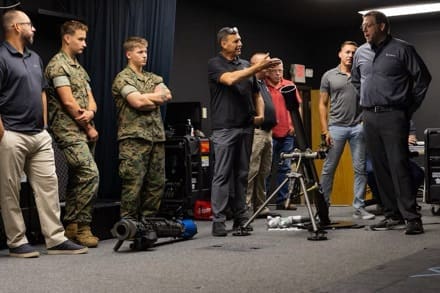
Central to the Marine Corps’ Project Tripoli—a groundbreaking initiative aimed at delivering a persistent, globally accessible Live, Virtual, and Constructive Training Environment (LVC-TE) across all domains and echelons—the mortar and MAAWS ISMT capabilities help sustain unit readiness in locations where range or training facilities are not available while also mitigating BOP concerns.
“From a safety perspective, we are committed to preventing negligent discharges,” said Tripp Elliott, MCSC System Safety Director. “We’re also focused on mitigating the impacts on hearing and preventing traumatic brain injuries. This has a huge impact. It’s crucial that while training, personnel do so correctly. For instance, when they drop a round into the mortar system, they must remember to move their hand, as in real life, a mortar will soon shoot out of that tube, and we want to avoid injuries like losing fingers.”
Ultimately, the ISMT exemplifies how constant communication between the fleet and the acquisition community allows for proactive adaptation to evolving Pentagon guidelines. By providing Marines with realistic training experiences that closely mimic live fire exercises—while mitigating the most significant risks, such as BOP exposure and potential injuries—the ISMT enhances safety and operational readiness. Additionally, each use of the ISMT conserves valuable resources, reducing costs without compromising the Marine Corps’ lethal capabilities. In an era where every shot counts, ISMT ensures the warfighter remains sharp, ready, and as lethal as ever.
By Johannes Schmidt, MCSC Office of Public Affairs and Communication, Marine Corps Systems Command



